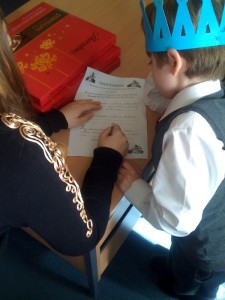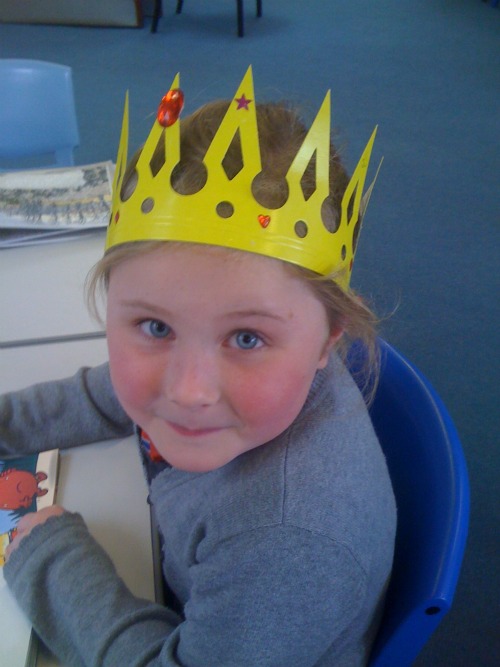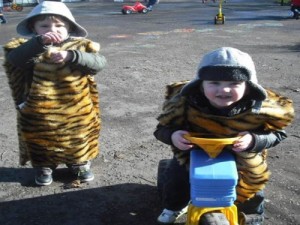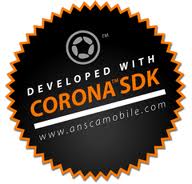

Consolarium blog
 Over the years we have worked with so many teachers and seen them use commercial off the shelf games in such a way that they are able to make purposeful, relevant and appealing links to traditional curriculum objectives. This has been the case in nursery, primary and secondary settings. We have found that handing over ownership of initial GBL ideas to teachers empowers them to bring their own idiosyncrasies to the table and to build experiences that can meet the needs of their learners. Here is another example of how teachers have done just that.
Over the years we have worked with so many teachers and seen them use commercial off the shelf games in such a way that they are able to make purposeful, relevant and appealing links to traditional curriculum objectives. This has been the case in nursery, primary and secondary settings. We have found that handing over ownership of initial GBL ideas to teachers empowers them to bring their own idiosyncrasies to the table and to build experiences that can meet the needs of their learners. Here is another example of how teachers have done just that.
How would you use the context of Mario Kart to help P.2 and P.3 children develop a real interest in and understanding off the healthy eating plate? Well. I wonder if there is anything that we can learn from the children at Bargarran PS, Mario and his gang in Mario Kart?!:
Changing a Gran’s point of view…
This example of how childrens’ learning can be situated within an appealing context sits nicely with the thoughts of one of the children’s grannies that I had the pleasure of chatting with at Bargarran PS’ Mario Kart Open Afternoon. I first met Mrs Fortescue, who has a grandson in P.2, in the corridor just as the afternoon kicked off. Her first words to me were, “It wasn’t like this at school in my day - this isn’t school, they’re just playing!” As a result of this chat I I asked if I could come back and speak to her after she’d seen what has been happening in the class… Have a listen to what Mrs Fortesuce had to say 30 minutes later:
As you can hear Mrs Fortescue was somewhat taken aback by what she saw, by what her grand-daughter had been doing and what she was able to tell her Grannie all about. Some of Mrs Fortescue’s main points about what she had seen include:
A consensus from the grandparents on the day?
I also spoke with another Grannie to see if this was a lucky or pressured change of heart. Mrs Hall has a grandson at the school as well and her interview was equally as positive as Mrs Fortescue’s:
The main points raised about the positive aspect of what she had seen at the open afternoon included:
If schools can build purposeful learning experiences that can engender such buy in from the children, their parents and their grandparents then maybe we are doing something right? Let’s not lose sight of what some of the parents and grandparents have said - if the resource has appeal than why not put it to good use to help children learn?
Hopefully this series of posts has helped convey some of the industry, life and sense of excitement about learning that I witnessed in my time at Bargarran PS. Thank you to everyone involved with this project and a huge thank you to those who shared their thoughts with us. Do feel free to leave a comment, question or observation on any of these posts.
More In the early days of the Consolarium a big part of our work in promoting the practice of game based learning involved addressing many of the concerns that teachers had about using such resources and contexts in their schools. Informed reference, we hope, was made to the many folk devils and moral panics associated with games back then but one major concern that was invariably thrown up by schools was - what might parents say about children ‘playing computer games’ in school when they should be learning?! Our experience over the past 5 years of promoting this work has been that parents have been more than pleasantly surprised at how GBL contexts have worked for their child/children. This ‘evidence’ in the parents eyes of good learning experiences may also be complemented by the changing nature of how computer games are now placed in family life. When we first started out the games console was still seen as something that kids did in the shadowy solitude of their bedrooms but haven’t things changed now? How many families do you know that have a console in a main living area and who will use this as part of family play? How many dads out there are red hot at FIFA11, how many mums have a Wii Fit or Zumba game as part of their keep-fit regime and how many grannies have Scrabble on their DS? Times have changed have they not? Are computer games still the folk devil of a few years ago?
In the early days of the Consolarium a big part of our work in promoting the practice of game based learning involved addressing many of the concerns that teachers had about using such resources and contexts in their schools. Informed reference, we hope, was made to the many folk devils and moral panics associated with games back then but one major concern that was invariably thrown up by schools was - what might parents say about children ‘playing computer games’ in school when they should be learning?! Our experience over the past 5 years of promoting this work has been that parents have been more than pleasantly surprised at how GBL contexts have worked for their child/children. This ‘evidence’ in the parents eyes of good learning experiences may also be complemented by the changing nature of how computer games are now placed in family life. When we first started out the games console was still seen as something that kids did in the shadowy solitude of their bedrooms but haven’t things changed now? How many families do you know that have a console in a main living area and who will use this as part of family play? How many dads out there are red hot at FIFA11, how many mums have a Wii Fit or Zumba game as part of their keep-fit regime and how many grannies have Scrabble on their DS? Times have changed have they not? Are computer games still the folk devil of a few years ago?
At the recent Mario Kart open afternoon at Bargarran PS I saw just how far the practice of game based learning has come in relation to how it is being perceived by children’s parents and guardians. At this event I witnessed a classroom packed with mums and dads, grannies and grandads all buzzing with excitement about what the children had been learning. Some of them were also more than keen to have a go at the game and get their name on the parents’ leaderboard!
I took the chance to chat with some mums and dads at the event to try to get their honest views of the use of a games console in classrooms and what impact the experience of the Mario Kart topic was having on their children.
Have a listen to my chat with Mrs Mavers who has a son is in P.2
The first parent that I interviewed was Mrs Mavers, a mum who was very keen to get the No.1 slot on the Mario Kart Parents’ leaderboard.
As you will have heard Mrs Mavers is of the opinion that this experience has been great for her son. Here are some of the points Mrs Mavers raised:
Have a listen to my chat with Mr & Mrs Brown who has son is in P.2
I took the opportunity to chat with the parents of a P.2 boy who were keen to let me know just how good an idea they felt the Mario Kart topic was and how it had had such a positive experience on their son. Have a listen:
As you will have heard Mr & Mrs Brown are also of the opinion that this experience has been great for their son. Here are some of the points Mr & Mrs Brown raised:
In my discussions with the class teachers it was clear that they see links between the school and the home as very important. They set out in the initial stages to ensure that good channels of communication were set-up and maintained and that the opportunity to celebrate and share the children’s learning with their parents was built in to the programme. All of this, coupled with the focused way that the Mario Kart resource has been used has again shown just how good teachers can use good resources to effect good teaching and learning. It’s great to see the parents supporting such practice.
More Parental involvement in the life and learning of a school can be an incredibly valuable asset. This is particularly true when parent/carers are active agents in understanding and supporting what is going in their child’s classroom. As we heard in the first of this series of posts the teachers involved had kept parents fully informed in relation to the rationale of the Mario Kart project. To further cement this relationship both classes planned a Mario Kart afternoon to share the learning that had been happening with their Mario Kart topic. Here is a short clip of parents coming in to the classroom. Also look out for the examples of the children sharing their learning with adults. They are so keen to show off what they have been doing. As you watch the clip do you get a sense that there is a real buzz about learning here? as the children excitedly share what they have been doing? A great thing to see in a classroom.
Parental involvement in the life and learning of a school can be an incredibly valuable asset. This is particularly true when parent/carers are active agents in understanding and supporting what is going in their child’s classroom. As we heard in the first of this series of posts the teachers involved had kept parents fully informed in relation to the rationale of the Mario Kart project. To further cement this relationship both classes planned a Mario Kart afternoon to share the learning that had been happening with their Mario Kart topic. Here is a short clip of parents coming in to the classroom. Also look out for the examples of the children sharing their learning with adults. They are so keen to show off what they have been doing. As you watch the clip do you get a sense that there is a real buzz about learning here? as the children excitedly share what they have been doing? A great thing to see in a classroom.
There was so much learning linked with this topic for the parent s to have a look a through. Literacy was something that was addressed quite heavily through this topic and one task that had the children creating their own Driving Licences was very eye-catching and had proved to be very popular with the children. (Unable to share due to children’s details included on their mock licences). Another popular writing activity involved the children coming with a basic character bible for a new Mario Kart character. Have a look at some of their work:
Have a closer look at some of them:
New Mario Kart Character: Holly Zoom Zoom
New Mario Kart Character: Queen Niamh
New Mario Kart Character: Queen Lola
New Mario Kart Character: Transform
I’m sure that the parents who came along to the Mario Kart Open Afternoon were very impressed with the range and quality of work that had been going on. The wall displays around the classroom drew many admiring glances and inquisitive comments from the mums, dads, grannies & granddads.
MoreAt the beginning of 2010 the Consolarium team, in their attempts to sow the seeds of innovative practice in schools, announced a competition that was to be held at that year’s Scottish Learning Festival. Based around the game Mario Kart for the Nintendo Wii the challenge was to se how fast you pupils could complete a lap of one the Mario Kart tracks. Teacher verified times were then emailed to us to be added to our Scottish Schools Mario Kart leaderboard. We must have loaned out over 20 sets of Mario Karts to schools across Scotland with the expectation that the game play would lead to a range of ways in which curricular activity could grow from the contextual hub ofd this game.
Sometimes when you plant seeds unexpectedly beautiful things can grow…
I was contacted by Wilma Leaburn, a QIO from Renfrewshire, a few months back and invited to a Mario Kart CPD evening at a school in Paisley. Apparently a number of teachers had taken this practice forward and a CPD session to share their experiences had been organised and so oversubscribed that another two evenings were to be delivered. The evening itself was a fantastic example of how creative teachers can be and how, when give the chance, their own idiosyncrasies can lead to wonderful learning experiences that meet the needs of their learners. At this event I met a teacher called Julie Paterson who invited me to Mario Kart open afternoon for parents and carers at her school, Bargarran PS in Erskine. This series of posts will feature my observations at this event.
What’s in the box? Creating the context
The children I met at Bargarran PS were just superb. They welcomed me into their class and were so eager to share with me what had been happening and what they had been learning about. In the middle of our earlier conversations it became clear that the arrival of the Wii into their class had been a bit special. Apparently, a gold box arrived one day and the question being asked was ; What’s inside the box? Lets let the children carry on the story…
The writing activity that arose from this early context creation was featured on the wall. Have a look at some of the children’s writing:
The Teachers’ Perspective
Julie Paterson and Jill Day were the P.2 and P.3 teachers that led this project. I took the opportunity to interview them after the Mario Kart open afternoon had ended.
Some of the strong messages about their observations and experiences with the Mario Kart project are:
“The parents have been incredibly supportive.”
“Sharing information and plans with the parents at the beginning of the project helped build that trust with parents.”
“The initial attention-grabbing context creation captured the children’s imagination and interest.”
‘Some children, who maybe don’t engage as well as the teachers would like in class, showed increased levels of motivation and willingness to engage with learning.”
“The Mario Kart project had a particularly positive impact on boys attitudes to learning.”
“Fun, personalisation and choice should be at the heart of learning experiences within contexts for learning in Curriculum for Excellence.”
Thank you to the teachers, the pupils and parents at Bargarran PS for making us so welcome and for sharing the life of learning with in their classrooms with us,
More*Second guest post from Judi Regan and Dawn Calder at Menzieshill Nursery School, Dundee who are involved with our Kinectimals initiative. Read their first post too.
The children at Menzieshill Nursery School in Dundee are continuing to explore and investigate Kinectimals and extend and develop through games based learning. This blog update, we are focussing on some Health and Well-being experiences and outcomes and these will be highlighted throughout.
Kinectimals offers a fantastic opportunity for physical movement and skill development within an ICT context. A favourite mini game is using a football with the cub, providing ways to manage and control body movements (HWB 0-21a and HWB 0-22a). Children learn to move themselves to the left or to the right, depending on where the ball is kicked back to them, and are frequently left puffing and commenting “I’m sweating!” This allows investigation into raised heart rates – “Put your hand on your chest and feel your heart beating faster” – “why do you think that is?” (HWB 0-28a)
Turn-taking and co-operation skills are enhanced by Kinectimals (HWB 0-23a) and children are independently working out ways to take turns by themselves. We have been using a 5 minute sand timer as a visual aid, however some children are choosing to swap turns depending on the game or toy the cub chooses to bring to play with.
 This style of learning really suits our young digital natives and we have seen many occasions where children are encouraging and sharing tips with their peers. (HWB 0-11a) It’s clear the children love the animated characters in this game, which each group has named. (A challenge in itself, given the noise in the nursery!) The children refer to the cubs by name – “I’m scooting Blacky with the water pistol!” and “I like stroking Spot” giving ownership and different ways to express feelings. (HWB 0-01a)
This style of learning really suits our young digital natives and we have seen many occasions where children are encouraging and sharing tips with their peers. (HWB 0-11a) It’s clear the children love the animated characters in this game, which each group has named. (A challenge in itself, given the noise in the nursery!) The children refer to the cubs by name – “I’m scooting Blacky with the water pistol!” and “I like stroking Spot” giving ownership and different ways to express feelings. (HWB 0-01a)
We made fluffy animal tabards for the children to re-create some of the inside games outside, for example, throwing small balls at targets, and some of the driving games. These have been very popular so much so, we are in the process of making more!
As we have progressed, the staff have become more confident in the start-up sequence and navigating their way around the game.
Now the better weather is with us, as with all nursery schools, the curriculum and just about all the activities move outdoors and we have not been using the game quite as regularly as before, however, as mentioned earlier, the animal costumes have been popular. We intend to use our Beebot (outdoors on a mat) to extend and develop the concept of Kinectimals by dressing up the beebot as one of the cubs and designing a Beebot mat along the lines of some of the games within Kinectimals, for example, when Beebot cub lands on a particular square, the directions may say, “throw the beanbag at the targets” – similar to the gameplay. Our aim is to continue the link with Kinectimals in an outdoor environment.
Check back again later for further updates on our journey into the wonderful world of the Kinectimals!
MoreOver the past 18 months, the Consolarium team have been looking at how to get game design into schools, from the earliest possible stage, in order to develop our ‘creation not consumption’ approach to gaming and it’s links with Curriculum for Excellence.
We have worked with individual schools, teachers, pupils, school clusters and local authority working groups. We have delivered CPD to groups of primary and secondary teachers, as well Computing specialists and spoken at and/or ran workshops at various national events, as well as running the games design competition for SLF 2010. We have also developed a range of support tutorials hosted within our glow group.
However, it is fair to say that most of work has been focussed on developing game design skills from early primary to S2 with tools such as Scratch, BYOB, Kodu and 2DIY. These environments have allowed our learners, and indeed teachers, to really engage with the technical side of game design by removing the fear of the unknown. Indeed, many primary colleagues were concerned with how they would approach outcome TCH 2-09a and TCH 3-09a : ‘Using appropriate software, I can work collaboratively to design an interesting and entertaining game …’. The feedback we have been given from staff and the great work we have observed in our visits to various schools shows us that we are beginning to see game design utilised in Scottish class rooms with confidence and enthusiasm.
While this is still a hugely important part of the work that we do, it’s time to look at what’s next. At the moment, our glow group has resources for learning XNA and a few Blender 3d tutorials more suited to the senior school that some people have been using, however, in June and July, we’d like to extend our resources for post S2 game design. How do we develop their skills, without repetition?

Again, many free tools are available, such as Unity, and the Corona SDK. These are game design tools that offer more challenge in terms of programming and are cross platform. At this point, we’d like to hear your thoughts on resources you would like to see developed. In particular, is there a particular development environment you would like to use more than the others?
Please let us know what you think we should look at in terms of developing and delivering support for game design for post S2 pupils.
Find us on